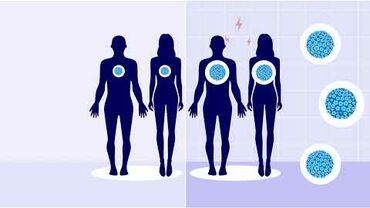Anopheles labranchiae - Factsheet for experts
Species name/classification: Anopheles labranchiae Falleroni, 1926
Common name/synonyms: Member of the Anopheles maculipennis complex. Synonym Anopheles sicaulti [17]
Summary
- Restricted to southern and south-eastern Europe.
- Distribution and recent declines have been linked to loss of wetlands and rice cultivation. Its re-emergence in parts of Italy has been linked to rice cultivation.
- Aggressive human biter; endophilic.
- Suggested to have been involved in malaria transmission in Spain, Portugal, France, Corsica and Italy, most recently in Italy in 2011.
Geographical distribution
Current distribution:
Anopheles labranchiae is restricted to southern and south-eastern Europe [1], with reports from Corsica, coastal areas of Italy, Sardinia, Sicily and the Istrian peninsula and Dalmatian coast of Croatia (Merdic, personal communication) [1]. It has also been reported from the Czech Republic, Slovakia, and Bulgaria [2], although these reports have been questioned as the identification was based on morphology. Anopheles labranchiae is also distributed across North Africa [3]. It may occur in Hungary but this needs confirmation [4]. Anopheles labranchiae was once considered eradicated from Italy but has re-established in Sardinia, Sicily and the mainland in recent years [5], which has been suggested to be a result of the introduction of rice cultivation [6,7]. On the mainland it occurs in western, south-eastern and south-western coastal districts (Romi, personal communication). In Sicily and Sardinia, records of this species have been reported as high as 1000 metres above sea level [8]. Surveys in Spain in the late 1970s suggest this species has disappeared, possibly as a result of wetland desiccation and abandonment of rice fields [9,10].
In Spain in 2001 a survey was carried out in the region were this species was detected and it was confirmed that An. labranchiae disappeared along with the rice fields (Aranda & Eritja, personal communication). An. labranchiae is suggested to be increasing its geographical distribution northward and eastward in Italy [6] and may reappear in Spain if rice cultivation return even though most of the other natural wetland habitats have been destroyed [11]. Expected future climate change may modify the distribution of this species [12].
In Sicily and Sardinia, An. labranchiae represents the only species of the maculipennis complex present on both islands, where it breeds in fresh water only. Scattered foci are still distributed along the coastal plains as well as in inner areas up to an altitude of about 600 metres above sea level. In continental Italy, the species was reported only along the coastal plains of the central-southern regions, both in the west (Tyrrhenian) and east (Adriatic), where it breeds in brackish as well as in fresh water.
At present, the species is mainly reported in the coastal plains in the west, with a northern distribution limit between 42° and 43°N, and in the coastal plains of the east (between 41° and 42°N). It is interesting to note that, since the implementation of the five-year EDEN project, populations of An. labranchiae have been found in internal/hilly areas of central Italy, where the species has never been recorded before (Romi, personal communication) [6,8,13-16].
Entomology
Species name/classification: Anopheles labranchiae Falleroni, 1926
Common name/synonyms: Member of the Anopheles maculipennis complex. Synonym Anopheles sicaulti [17]
Morphological characteristics/similar species:
Adults of An. labranchiae are impossible to distinguish from other sibling species of the Anopheles maculipennis complex and are most easily identified morphologically by examining their eggs [1]. Eggs of An. labranchiae are smaller and appear lighter in colour compared to sibling species and can be identified due to difference in size and shape of the columella, which are irregular without a spot, lack transverse bands, have short and narrow floats and a rough intercostal membrane [18]. The surfaces of the eggs are richly patterned, with wedge-shaped dark marks on a pale background [1]. Further descriptions of larva and pupa are available in Bates [19]. Identification by morphology within the An. maculipennis complex remains doubtful, and thus it is recommended to perform a molecular analysis (e.g. of ITS2 rDNA sequence using PCR-RFLP) [20-22].
Life history (diapausing tendencies, seasonal abundance, flight range, voltinism, etc):
Adults are active from January–February until October–November [3]. A study in Italy showed a peak of adult activity in June and then September [6]. The optimal conditions for adult activity of An. labranchiae have been suggested to be: minimum temperature 14.3 °C, average cloud cover 45.9%, and average diurnal temperature range 12.7 °C [3]. Females can lay eggs several times a year and voltinism is dependent upon local climatic conditions [23]. Being a southern species, An. labranchiae adult activity declines briefly during colder months [18]. Hibernation takes place in the adult female stage in sheltered locations such as animal stables [1]. Flight range is suggested to be usually 2–5 km, and up to 6.5 km in favourable conditions [2].
Host preferences:
Anopheles labranchiae is opportunistic in host choice, and this depends on host availability [6]. Some studies report that An. labranchiae are principally feeding on humans [18] and that they are particularly aggressive when attacking potential human hosts [6].
Aquatic/terrestrial habitat:
Anopheles labranchiae is suggested to preferentially oviposit in fresh water habitats, e.g. rock holes, pits, ditches, canals, drains, rice fields, rivers, isolated pools in streams, flooded ground pools/ponds, lakes, reservoirs, artificial basins for agricultural water supply [24] (Romi, personal communication), but will also utilise brackish water habitats, e.g. coastal marshes and lagoons [18], tolerating salinity between 3–10 g/l [1,23]. Larval development needs 12 days at 25 °C [2]. They are more common where the water supply does not depend on the seasonal amount of rainfall.
In Sardinia, sibling species of the complex are virtually absent, and larvae of An. labranchiae are most often found in fresh water habitats [1]. They have a similar larval habitat preference to An. atroparvus but tend to be found in warmer, sunlit habitats [18] but can also be found in shaded areas with dense vegetation [23]. They have been found to be particularly abundant in newly established rice fields [7,25] which provide a constant breeding ground, allowing for significant increases in population numbers [6].
Resting habitat:
Adults of An. labranchiae are often found resting indoors, particularly in animal shelters (pig pens, stables, haylofts, garages) within the vicinity of larval habitats [23]. They are occasionally found resting in natural crevices or tree holes outdoors [1]. They tend to digest their blood meal indoors (Romi, personal communication). Resting females may be found in abundances up to 500 (Romi, personal communication).
Biting behaviour:
Anopheles labranchiae is reportedly an endophilic species which will aggressively attack human hosts. A study in Italy showed host seeking to be highest during early hours of sunset but activity continued through the night [6]. In endemic areas, this species is perceived as a serious biting nuisance [25].
Environmental thresholds/constraints:
Larvae of An. labranchiae are not very tolerant to high levels of organic or mineral pollutants in aquatic habitats [24]. Distribution has largely been limited to Italy and surrounding islands (Sicily, Sardinia, Corsica) but also northern Africa and southern coastal Spain [18].
Epidemiology and transmission of pathogens
Known vector status:
Anopheles labranchiae is (and has been) an important (potential) vector of malaria throughout its distribution [1]. It has been suggested that An. labranchiae were involved in malaria transmission in Spain, Portugal, France and Italy [12]. Historically, there is evidence of natural infection with exotic strains of Plasmodium falciparum and recently, studies have suggested that they are competent under laboratory conditions [23], but generally An. labranchiae is said to be unsuitable for transmitting exotic strains [26]. Historically they have also been known to transmit Plasmodium malariae [23]. More recently it has been reported to be responsible for onward transmission from an imported case of Plasmodium vivax in Corsica in the 1970s [5].
Anopheles labranchiae was a proven vector of malaria along the coastal plains (up to 200–330 metres above sea level) of central and southern continental Italy, Sardinia and Sicily. It is thought to have been involved in an autochthonous case of vivax malaria reported in southern Italy in 2011 [27] and may have been responsible for another case in Corsica in 2006 [28]. The existence of An. labranchiae in the coastal areas of Italy presents a possibility of onward transmission [25] because of the high numbers of foreign tourists (sometimes from malaria-endemic countries).
It is not clear if the presence of formerly vector-competent European Anopheles species can be correlated with a certain risk of present malaria transmission after infection of the mosquitoes, even if the climatic conditions are beneficial to parasite development in mosquitoes [12].
Surveillance
Activities in Europe:
Various countries have set up nationwide surveillance schemes to establish baseline distributions of species, detect changes in distribution but also introductions of new species, and this has included targeted surveillance for this species (e.g. Italy, Spain). This information is currently shared with VBORNET partners and collaborators via the network.
Sampling strategies:
Adult resting females are commonly collected with manual or battery-powered aspirators, primarily from animal shelters, in which the majority of mosquitoes are found [6,7]. Human bait collections during the night and CDC light traps with or without CO2 are also used [6,13]. Mosquito larvae can be sampled by dipping in aquatic habitats [6,13].
Control
Species-specific control methods:
Anopheles labranchiae can be difficult to control. This species is prolific in Sardinia and despite a five-year eradication programme this species remains established there [24]. Insecticides such as DDT, and later HCH, chlorpyrifos, fentrothion, pyrethroids, and larvivorous fish such as Gambusia have been used to reduce larval densities. Bacillus thuringiensis israeliensis has been used to treat larval habitats in Corsica on a weekly basis, but An. labranchiae can still persist in high numbers if not adequately treated [23].
The decline in rice cultivation has been linked to the decline of this mosquito. Land-use changes caused by the adoption of different farming methods and increases in coastal tourism activities are also associated with reduced An. labranchiae populations [25]. Conversely, the establishment of rice field habitats has contributed to its re-colonisation [25]. Personal protective measures to reduce the risk of mosquito bites include the use of mosquito bed nets (preferably insecticide-treated nets), sleeping or resting in screened or air-conditioned rooms, the wearing of clothes that cover most of the body, and the use of mosquito repellent in accordance with the instructions indicated on the product label.
References
1. Becker N, Petric D, Zgomba M, Boase C, Madon M, Dahl C, et al. Mosquitoes and their control. Second ed. Berlin: Springer Verlag; 2010.
2.. Schaffner F, Angel G, Geoffroy B, Hervy JP, Rhaiem A, J. B. The mosquitoes of Europe (CD ROM). Montpellier, France: IRD Edition and EID Méditerranée; 2001.
3. Kuhn KG, Campbell-Lendrum DH, Davies CR. A continental risk map for malaria mosquito (Diptera: Culicidae) vectors in Europe. J Med Entomol. 2002 Jul;39(4):621-30.
4. Tóth S, Kenyeres Z. Revised checklist and distribution maps of mosquitoes (Diptera, Culicidae) of Hungary. European Mosquito Bulletin. 2010;3030-5.
5. Baldari M, Tamburro A, Sabatinelli G, Romi R, Severini C, Cuccagna G, et al. Malaria in Maremma, Italy. Lancet. 1998 Apr 25;351(9111):1246-7.
6. Di Luca M, Boccolini D, Severini F, Toma L, Barbieri FM, Massa A, et al. A 2-year entomological study of potential malaria vectors in central Italy. Vector Borne Zoonotic Dis. 2009 Dec;9(6):703-11.
7. Romi R, Boccolini D, Vallorani R, Severini F, Toma L, Cocchi M, et al. Assessment of the risk of malaria re-introduction in the Maremma plain (Central Italy) using a multi-factorial approach. Malar J. 2012;11:98.
8. Romi R, Sabatinelli G, Majori G. Could malaria reappear in Italy? Emerg Infect Dis. 2001 Nov-Dec;7(6):915-9.
9. Blazquez J, De Zulueta J. The disappearance of Anopheles labranchiae from Spain. Parassitologia. 1980 Jan-Aug;22(1-2):161-3.
10. Eritja R, Aranda C, Padrós J, Goula M, Lucientes J, Escosa R, et al. An annotated checklist and bibliography of the mosquitoes of Spain (Diptera: Culicidae). European Mosquito Bulletin. 2000;8:10-8.
11. Aranda C, Escosa R, Marqués E, editors. Malaria situation in Spain and its potential vector Anopheles atroparvus. 15th E-SOVE; 2006; Serres, Greece.
12. Alten B, Kempen H, Fontenille D. Malaria in Southern Europe: resurgence from the past? In: Takken W, Knols BGJ, editors. Emerging Pests and Vector-Borne Diseases in Europe 1. Wageningen: Wageningen University Press; 2007. p. 35-57.
13. Romi R, Pierdominici G, Severini C, Tamburro A, Cocchi M, Menichetti D, et al. Status of malaria vectors in Italy. J Med Entomol. 1997 May;34(3):263-71.
14. Bietolini S, Candura F, Coluzzi M. Spatial and long term temporal distribution of the Anopheles maculipennis complex species in Italy. Parassitologia. 2006 Dec;48(4):581-608.
15. Romi R, Boccolini D, D'Amato S, Cenci C, Peragallo M, D'Ancona F, et al. Incidence of malaria and risk factors in Italian travelers to malaria endemic countries. Travel Med Infect Dis. 2010 May;8(3):144-54.
16. Romi R, Severini C, Cocchi M, Tamburro A, Menichetti D, Pierdominici G, et al. [Anopheles in Italy: distribution on rice lands in the provinces of Grosseto and Siena]. Ann Ist Super Sanita. 1992;28(4):527-31.
17. Laboudi M, Faraj C, Sadak A, Harrat Z, Boubidi SC, Harbach RE, et al. DNA barcodes confirm the presence of a single member of the Anopheles maculipennis group in Morocco and Algeria: An. sicaulti is conspecific with An. labranchiae. Acta Trop. 2011 Apr;118(1):6-13.
18. Hackett LW, Missiroli A. The varieties of Anopheles maculipennis and their relation to the distribution of malaria in Europe. Rivista di Malariologia. 1935;14:1-67.
19. Bates M. Variation in the anteplamate hairs of larvae of the Anopheles maculipennis complex. . Rivista di Malariologia. 1939;18:299-312.
20. Proft J, Maier WA, Kampen H. Identification of six sibling species of the Anopheles maculipennis complex (Diptera: Culicidae) by a polymerase chain reaction assay. Parasitol Res. 1999 Oct;85(10):837-43.
21. Sedaghat MM, Linton YM, Nicolescu G, Smith L, Koliopoulos G, Zounos AK, et al. Morphological and molecular characterization of Anopheles (Anopheles) sacharovi Favre, a primary vector of malaria in the Middle East. Syst Entomol. 2003 Apr;28(2):241-56.
22. Talbalachi A, Shaikevich E. Molecular approach for identification of mosquito species (Diptera: Culicidae in Province of Alessandria, Piedmont, Italy. European Journal of Entomology. 2011;108(1):35-40.
23. Toty C, Barre H, Le Goff G, Larget-Thiery I, Rahola N, Couret D, et al. Malaria risk in Corsica, former hot spot of malaria in France. Malar J. 2010;9:231.
24. Sinka ME, Bangs MJ, Manguin S, Coetzee M, Mbogo CM, Hemingway J, et al. The dominant Anopheles vectors of human malaria in Africa, Europe and the Middle East: occurrence data, distribution maps and bionomic precis. Parasit Vectors. 2010;3:117.
25. Boccolini D, Toma L, Di Luca M, Severini F, Cocchi M, Bella A, et al. Impact of environmental changes and human-related factors on the potential malaria vector, Anopheles labranchiae (Diptera: Culicidae), in Maremma, Central Italy. J Med Entomol. 2012 Jul;49(4):833-42.
26. de Zulueta J, Ramsdale CD, Coluzzi M. Receptivity to malaria in Europe. Bull World Health Organ. 1975;52(1):109-11.
27. Romi R, Boccolini D, Menegon M, Rezza G. Probable autochthonous introduced malaria cases in Italy in 2009-2011 and the risk of local vector-borne transmission. Eurosurveillance. 2012;17(48):20325.
28. Armengaud A, Legros F, D'Ortenzio E, Quatresous I, Barre H, Houze S, et al. A case of autochthonous Plasmodium vivax malaria, Corsica, August 2006. Travel Med Infect Dis. 2008 Jan-Mar;6(1-2):36-40.



